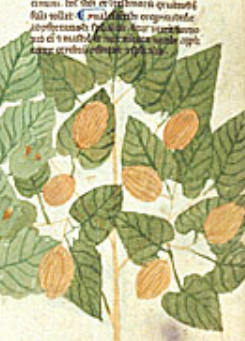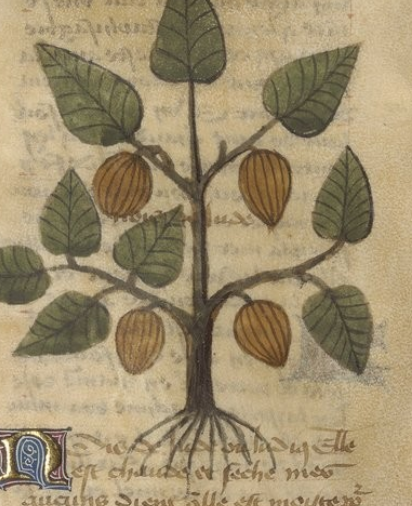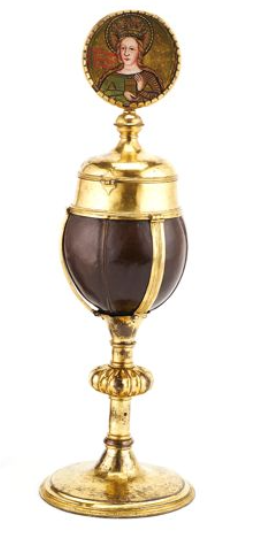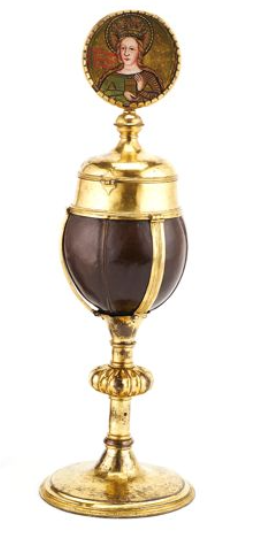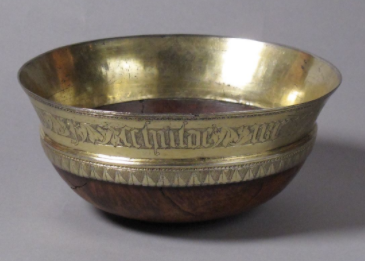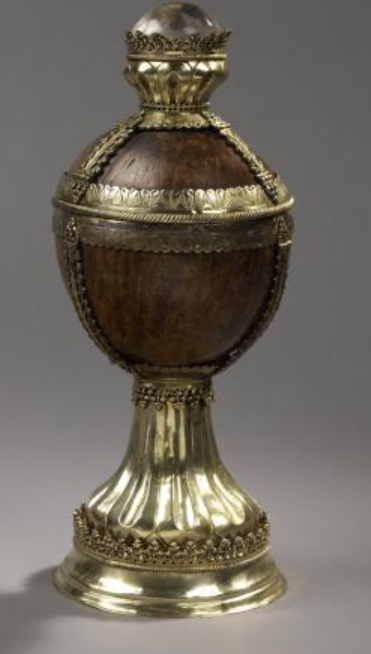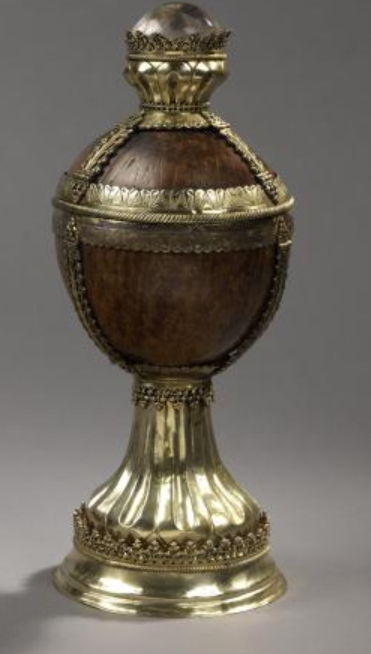ARE YOU READY TO COCOOOOO??
Folks, folks, IT& #39;S ON. You& #39;ve been waiting for this, and it& #39;s time.
Medieval. European. Coconuts.
Friends, he DID find them. He found them at the shop.
Folks, folks, IT& #39;S ON. You& #39;ve been waiting for this, and it& #39;s time.
Medieval. European. Coconuts.
Friends, he DID find them. He found them at the shop.
Yesterday we had reached the 7thc, so already early medieval really, and coconuts were in the Mediterranean just as they had been for the last 500 years.
We& #39;ve no reason to think that the Byzantines stopped having access to coconuts, or the Persians, or the Egyptians. Or anyone.
We& #39;ve no reason to think that the Byzantines stopped having access to coconuts, or the Persians, or the Egyptians. Or anyone.
What we get as we progress through the Middle Ages are more extant documents, so we have better information about what people DID with their coconuts than we did for Roman coconuts.
Remember that the Sasanians wrote about eating coconut. By the 10th century (at the latest) we have evidence of coconuts used as medicine in the Emirate of Cordoba, and doctors in Salerno were discussing it by the 11th and 12th centuries.
They& #39;re pretty consistent in depicting coconuts accurately (more or less) but coconut PALMS were clearly a stab in the dark-- big, wide leaves! (They tried.) Europeans would not illustrate accurate coconut palms before the later 16th century.
They used coconut oil as a sort of massage oil and softener, as we might today. They recounted that coconut served as a dewormer. Over time it was reputed to be used for a wide range of GI and urinary complaints, and in some places was also believed to aide sexual health.
Above all, perhaps, coconut tastes good, and smells good too. It can cover a lot of other, nastier flavors and smells, and could be added to medical preparations to make them palatable for patients.
Put the medicine in the coconut and drink it all up, medieval remix.
Put the medicine in the coconut and drink it all up, medieval remix.
Healing was big business in medieval Europe, and medieval people understood that their medical science wasn& #39;t complete. So they sometimes added prayer and religious ritual to their medicine, in a very whole-person approach to health.
They used coconuts for this too.
They used coconuts for this too.
The medieval cult of the saints was arguably the biggest business in medieval Europe, one way or another. Saints were viewed as having direct connection to the divine, connection that imbued their very bodies and surroundings with divinity.
This is why relics of saints& #39; bodies were kept and revered, used like radios to tune prayer in to a saint& #39;s own frequency. Prayers for healing were very common, and entire healing rituals developed around reliquaries, like this coconut cup reliquary featuring Mary Magdalene.
So if you built relics of healing saints into cups made of healing coconut shells, then drinking from that cup HAD to be healing, right?
The logic holds, based on the best medieval science available.
But that& #39;s not why the coconut reliquary looks the way it does.
The logic holds, based on the best medieval science available.
But that& #39;s not why the coconut reliquary looks the way it does.
This is. This is a mazer, a maplewood bowl used as a drinking cup. Mazers were common across medieval Europe, ordered in the dozens, and tossed into fires when they cracked from use. But people LIKED maplewood, and dressed some mazers up with brass, silver, and gold metalwork.
So if you get your hands on ANOTHER kind of speckled, swirled hardwood, one ALREADY formed into a cup shape, that& #39;s known to be sort of healthy, and is kind cool bc it& #39;s imported, YOU DO THE SAME THING w/IT.
The harnessed coconut was a European mazer, w/an imported shell. simple.
The harnessed coconut was a European mazer, w/an imported shell. simple.
There& #39;re no surprises here. Christianate European countries used coconut medicine and coconut cups straight through the Middle Ages.
They did so in Iceland.
They did so in Italy.
All before the name coconut existed.
They did so in Iceland.
They did so in Italy.
All before the name coconut existed.
So when you read something claiming that Vasco da Gama& #39;s crew saw coconuts for the first time in 1498 IT IS A LIE. (srsly there are NO gifs of Lying Cat? wat??)
Coconuts are in Latinate, Christianate Europe before global colonialism.
Coconuts are in Latinate, Christianate Europe before global colonialism.
The medieval European coconut is a holdover of an earlier empire, the Roman empire, & of the empires that developed after it. Coconuts were so deeply European that we& #39;ll see tomorrow that Europe brought them along as their own imperial ambitions fired across the 16thc and beyond.

 Read on Twitter
Read on Twitter